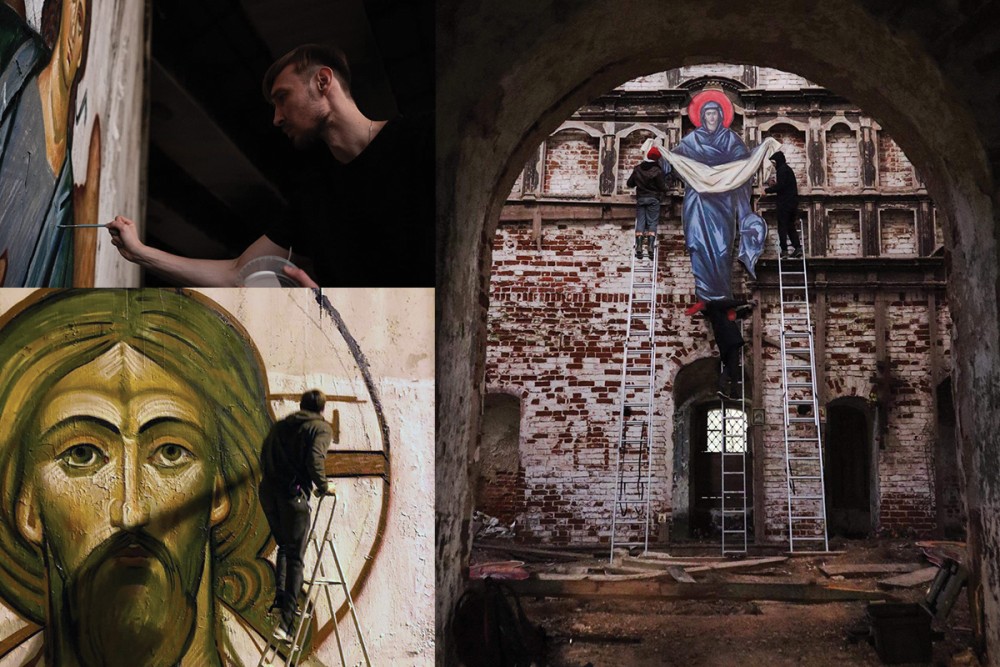Alexandr Tsypkov’s sacred graffiti
“We began to paint frescoes on the ruins of abandoned churches. We did not ask anyone’s permission.”

Once in a while, we are caught short by something so beautiful we lack words for it. That’s what happened to me when I first saw the work of Alexandr Tsypkov, an icon writer who beautifies abandoned buildings in Russia with ancient Christian images. I’ve studied and loved icons, but I’ve always seen and imagined them in churches and homes and on office walls. Tsypkov’s work, and that of his fellow artists in the After Icon project, is in more “secular” spaces—on rubble, trees, street corners, and the like, alongside fellow graffiti artists. This mix of the sacred and profane, of the iconographic and the ordinary, undoes me with its beauty. I talked to Alexandr about his work and that of his colleagues, why and how they do what they do, and what it means for art, faith, and life in Russia today.
We often think of graffiti as an insurgent art, often profane, impenetrable to outsiders. We often think of icons as stowed away in churches, unchanging, unseen by those who don’t venture inside. Why are you bringing the two together?
Christian art is always evolving. In every era, Christian art has absorbed different styles. Christian art of today can’t be ignorant of cinema, for example, or animation, or tools like the Internet or street art.





